. Romantischer Rhein (§ Templerhof, Bad Breisig)
. Wikipedia (§ List of Knights Templar sites, Germany)
. Wikipedia (§ Süpplingenburg)
. Komturei Lietzen (official website)
Further information: templiers.org
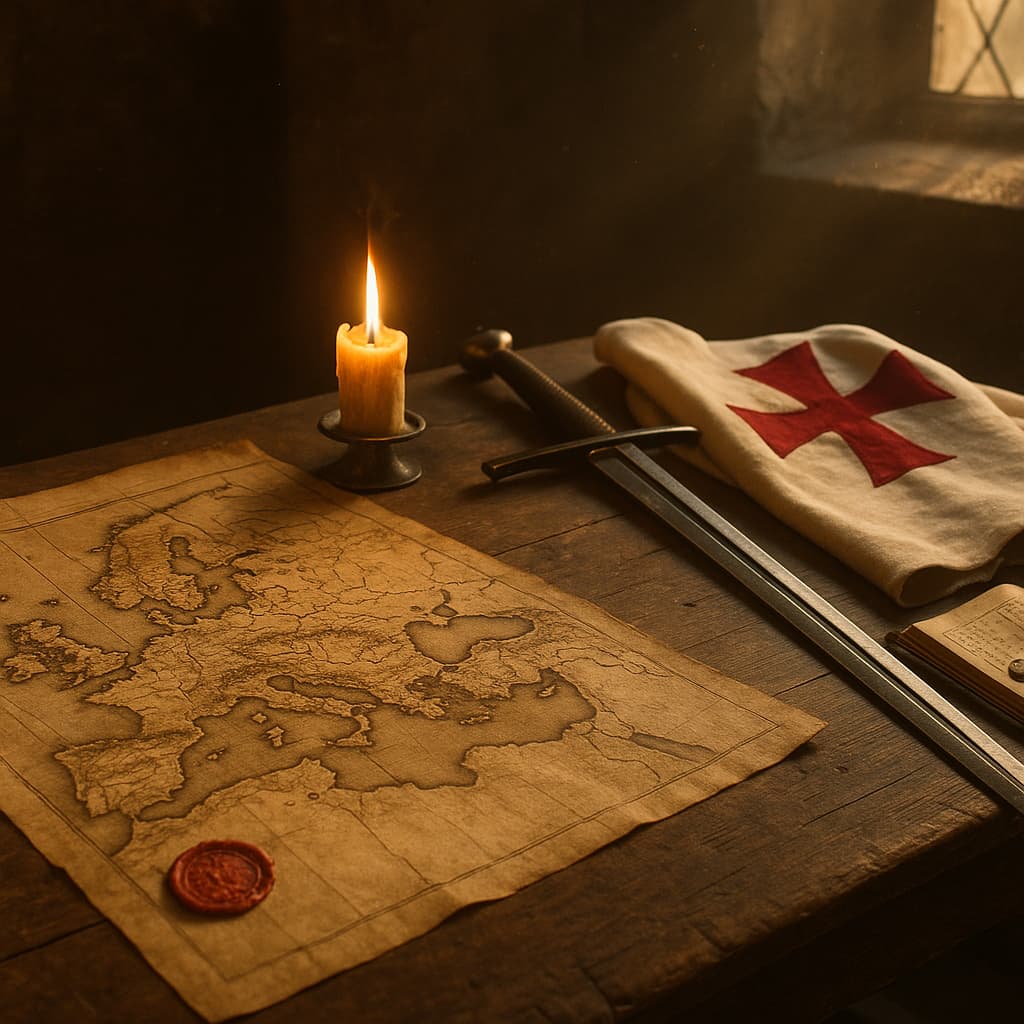

Born in the XIIᵉ century and suppressed in 1312, the Order of the Temple was at once a religious community, a military network and a European land power. The brothers were governed by a single set of rules, yet their settlements varied according to the terrain. In Iberia, the Knights Templar took part in the Reconquest frontier, administering castles and valleys, before their legacy passed largely to the Hospital or Montesa in the XIVᵉ century. In France, a dense network of commanderies, backed by donor families and Cistercian routes, made the Temple a leading agricultural and seigneurial manager, before the arrests of 1307. In England, their presence in the towns around the London Temple encouraged the deposit of funds and the lending of power. In Northern Italy, the houses were part of merchant cities and the interplay between the Papacy and the Empire; in German-speaking countries, they were closely linked to prince-bishops and local nobility. At the top, the "central convent" in the East, successively in Jerusalem, Acre and Cyprus, coordinated the whole. This page follows this European thread: the same institutional framework, practices adapted to regional realities... and a lasting legacy in architecture, archives and memory.
A sparse network, attached to the provinces of Alemannia and Slavia, with houses such as Tempelhof in Berlin and Lietzen in Brandenburg. In Tempelhof, the transfer to the Hospitallers was not completed until 1318, via the Treaty of Kremmen. The process was discreet, supported mainly by the archbishoprics of Mainz and Magdeburg. Settlement was more closely linked to ecclesiastical lordships and towns than to military fronts.

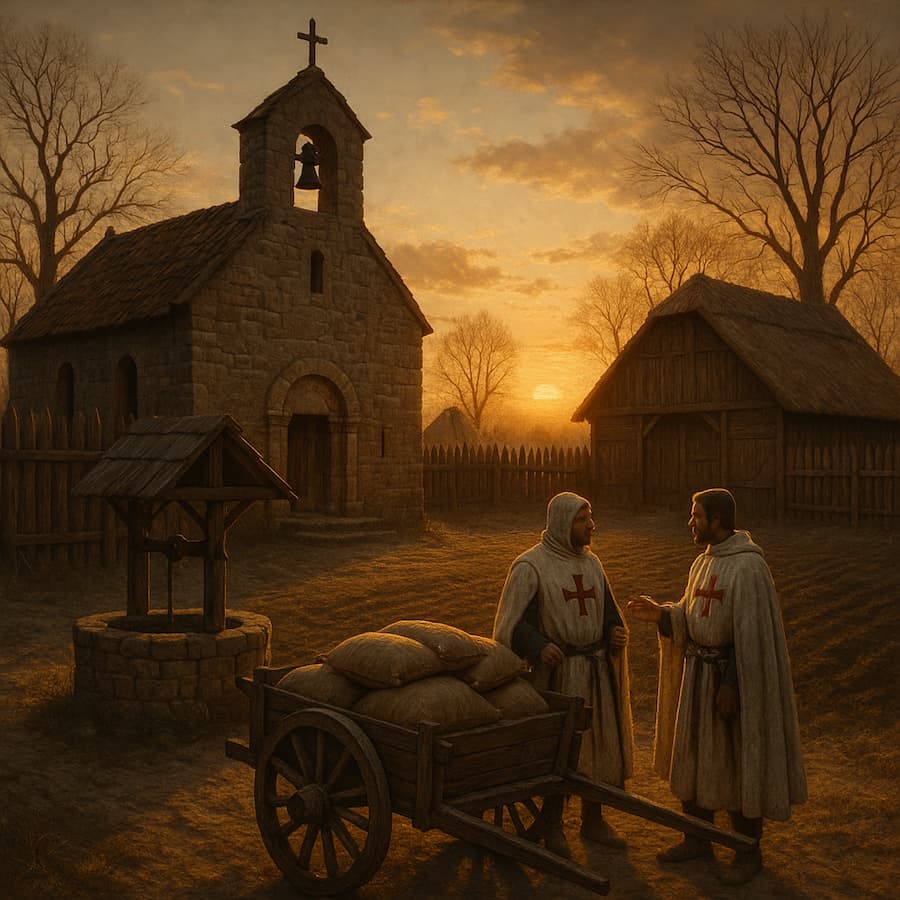
At London's New Temple, the brothers manage royal deposits and loans, the financial and legal heart of the Order. The network extends from towns to large farms, such as Cressing Temple and its huge XIIIᵉ century barns. Arrests were made in 1308, and property passed to the Hospitallers after 1312. The Temple Church, with its round nave inspired by the Holy Sepulchre, remains the architectural icon.



In Hesbaye and Flanders, the houses are more agricultural and welcoming than warlike. Haneffe preserves a chapel and a farm, documented as early as 1265; on the coast, Slijpe is a case study excavated by archaeologists. After 1312, the property passed to the Hospitallers, often attached to the Avalterre baillie of the Grand Prieuré de France. Toponymy, from Villers-le-Temple to Haneffe, keeps the local memory alive.
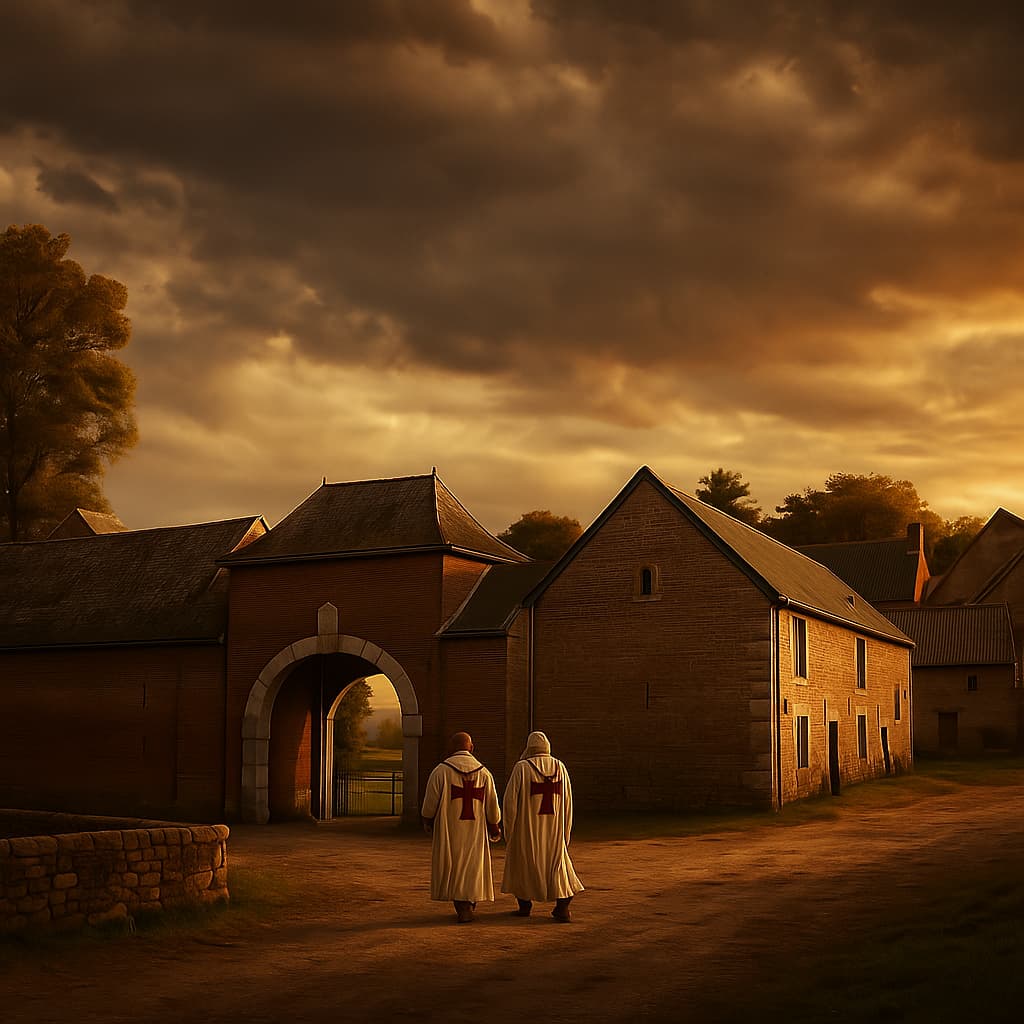

In the Crown of Aragon, Miravet and Monzón structured true marching lordships in the XIIIᵉ century; Monzón held a long siege in 1308-1309. After 1312, Aragon and Catalonia see the bulk pass to the Hospital, while Valencia founds Montesa in 1317 to take over the Temple's legacy. In León, Ponferrada illustrates the monumental nature of Templar castles. The whole reflects an adaptation to border wars and Mediterranean port networks.

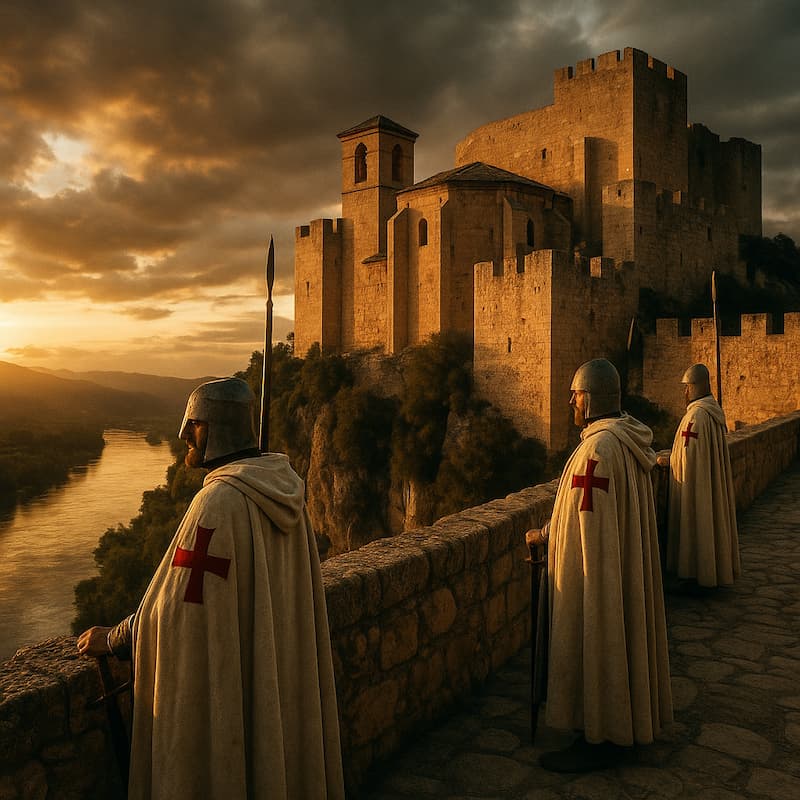
The normative framework was born in Troyes in the XIIᵉ century, and the network of commanderies irrigated Champagne, Poitou, Languedoc. In Paris, the Temple enclosure functions as a free city; on October 13, 1307, arrests begin there. Avalleur near Bar-sur-Seine retains its early XIIIᵉ century chapel and dwelling, a "stone" reading of an economy of rents and barns. After 1312, the Hospitallers ensured seigneurial continuity on most sites.
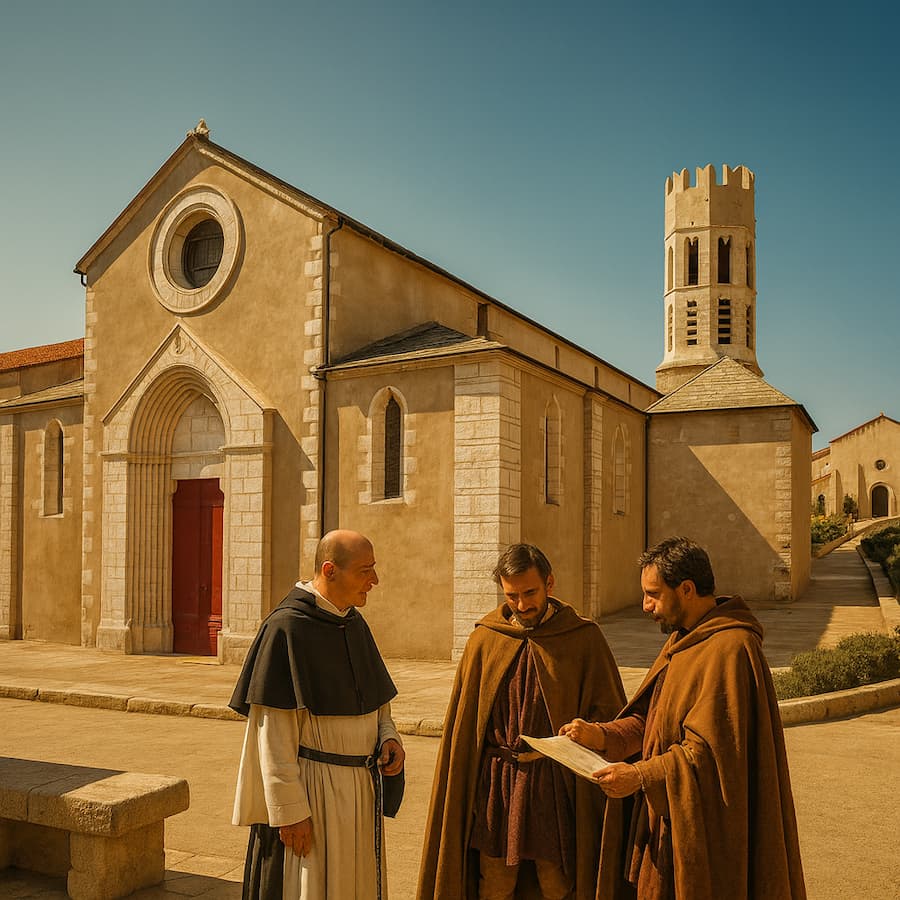



Early integration into towns and ports, from Genoa to Barletta, with assertive urban functions. In Perugia, San Bevignate boasts an exceptional cycle of frescoes, with Templar symbols and travel scenes; in Verona, San Vitale has delivered liturgical books attesting to a true cura animarum. The death of Master Arnau de Torroja in Verona in 1184 anchored the Order in local memory. After 1312, property passed to the Hospital, often reorganized by urban authorities.


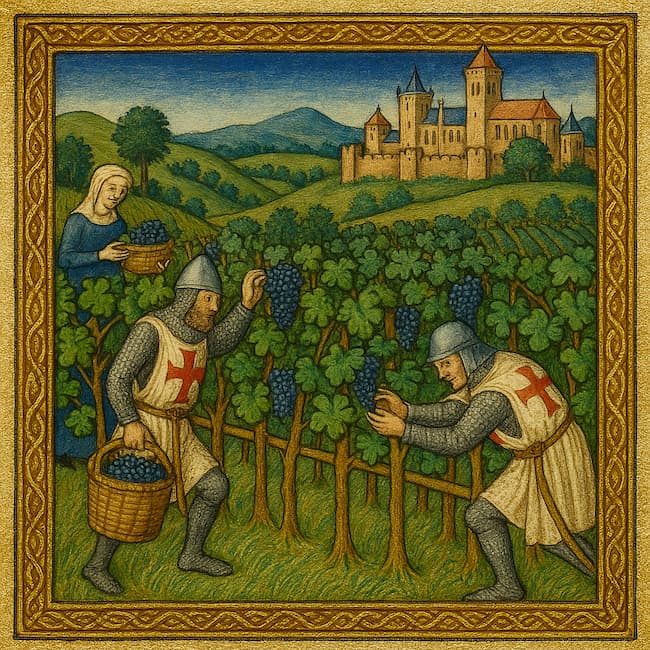
Presence concentrated in Western Pomerania, with Chwarszczany, Rurka and Myślibórz, attached to Alemannia and Slavia. Chwarszczany's XIIIᵉ century chapel preserves remarkable wall paintings, indicative of a structured religious life. The functions were mixed, between control of river axes and domanial management. After 1312, the inheritance passed to the Hospitallers, in an area soon to be dominated by other military orders.

Defensive line of the Tagus in the XIIᵉ century, with Tomar founded by Gualdim Pais, Almourol rebuilt in 1171 and the granite sentinel of Monsanto. Tomar retains the charola inspired by the Holy Sepulchre, its spiritual and strategic heart. A major singularity after 1312, the creation of the Order of Christ in 1319 ensured institutional continuity. This relay would later explain Tomar's role in the momentum of the Discoveries.
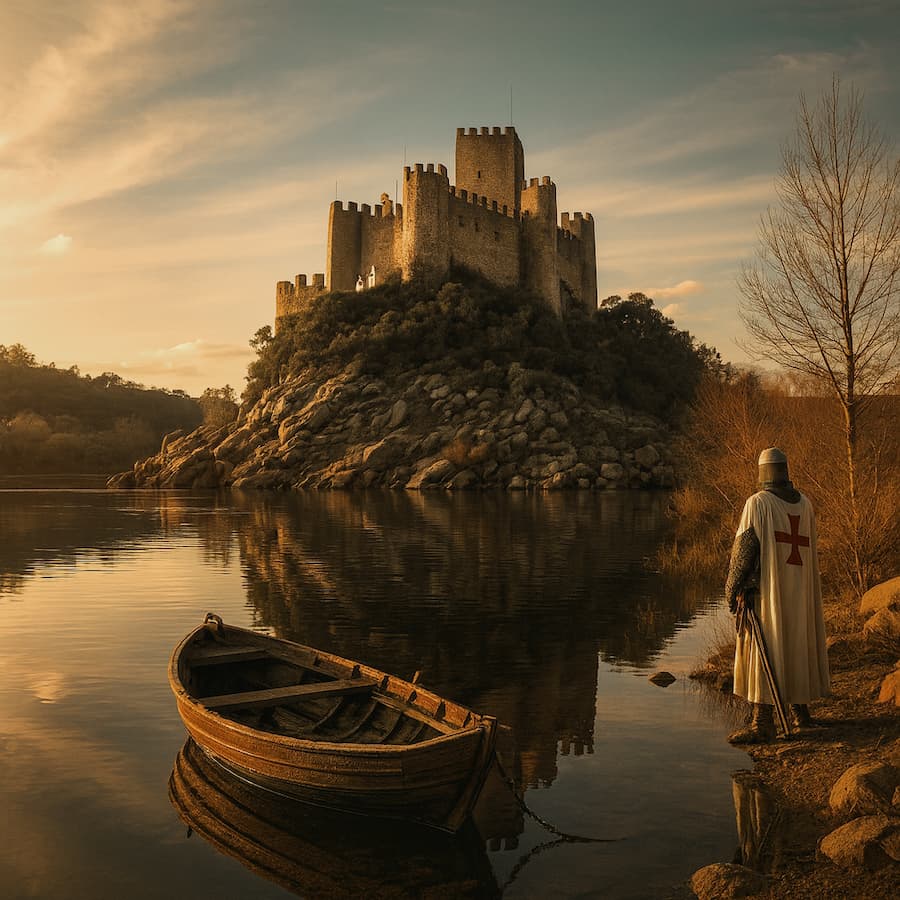

A tiny but well-documented network, centered on La Chaux (Cossonay) and the "Maison du Temple" in Genève-Rive. La Chaux supervised hospices in Orbe, Villars-Sainte-Croix and Montbrelloz; in 1277, there were even sales to balance the books. Rapid transfers to the Hospital after 1312, Geneva in 1313 and La Chaux around 1315. Here, the Temple mainly serves the transit traffic between Lake Geneva and the Jura mountains.

Large helmet ...see more
Templar sword ...see more
Decorative sword ...see more
Secure payment: your choice


PayPalwith or without account (CB)

Scalapay: 3 times free of charge

Cheque or bank transfer (contact us)
Trust
. French company
. Integrated warehousing and logistics
. No customs duties
. Studio and engraving workshop
. Shipment within 48 working hours
. Delivery in mainland France and Europe (Euro zone: Germany, Austria, Belgium, Cyprus, Croatia, Spain, Estonia, Finland, Greece, Ireland, Italy, Latvia, Lithuania, Luxembourg, Malta, Netherlands, Portugal, Slovakia, Slovenia); D.O.M. / T.O.M.: on quotation. Please contact us for further information.
. 14-day right of withdrawal
Delivery

Your Colissimo tracking space allows you to track and manage the delivery of your parcels.
Useful links
Customer reviews
Terms & Conditions
Frequently asked questions (F.A.Q.)
Cancellation form
Personal data R.G.P.D.